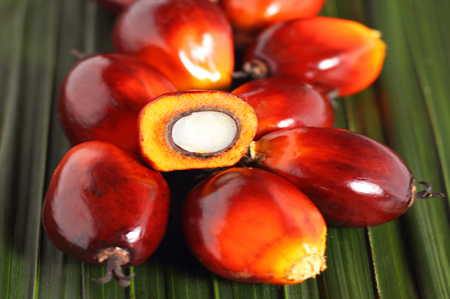 (Agrimoney) – Palm oil prices will continue to gain support from falling Indonesian and Malaysian stocks – but the potential for users to switch to other vegetable oils should temper expectations for gains, Sipef said.
(Agrimoney) – Palm oil prices will continue to gain support from falling Indonesian and Malaysian stocks – but the potential for users to switch to other vegetable oils should temper expectations for gains, Sipef said.
The dent to palm oil output in the key South East Asian producing countries from drought, blamed on El Nino, has yet to play out, with production “expected to continue to suffer until the middle of summer”, the plantations group said.
This will extend a decline in palm oil inventories in Indonesia and Malaysia, the top producing countries, “and this will continue to support prices”, Sipef said.
However, the group also highlighted that vegetable oils are largely interchangeable in many functions.
The US Department of Agriculture has forecast world production of soyoil reaching a record 52.1m tonnes this year, supported by strong global soybean output, although investors believe that inundations in Argentina, the top exporter of soyoil, will prompt some downgrade to this figure.
“Given the competitiveness with liquid oils we do expect some switching to take place, and it is unlikely that palm oil will rally on its own,” Sipef said.
“We expect a steady trading range [in palm oil prices] in the coming months.”
Palm price gains
The comments came even as palm oil futures extended the latest leg of their rally on the Kuala Lumpur futures exchange, closing up 1.0% at 2,735 ringgit a tonne.
That took to 10.1% gains prices so far in 2016, although futures remain below the two-year high of 2,793 ringgit a tonne set last month.
The decline in inventories in Malaysia has been highlighted by data from the country’s industry regulator, the Malaysian Palm Oil Board, which earlier this month reported domestic stocks for March of 1.89m tonnes.
Besides being a one-year low, that represented a decline of 13.1% from February, the biggest month-on-month drop in more than two years.
The fall in inventories was fostered by continued weakness in production which, at 1.22m tonnes in March, was down 18.1% year on year.
‘Steady market’
Nonetheless, Sipef said that it had achieved lower prices, in dollar terms, for its palm oil output than a year ago, so far hedging 39% of its forecast output for this year at the equivalent of $681 a tonne in the benchmark Rotterdam export market.
A year ago, it had sold forward 34% of anticipated palm output at the equivalent of $773 a tonne.
This in turn was well below the near-$1,000 a tonne achieved for early sales of the 2014 harvest.
The group added that it had achieved lower selling prices too for forward sales of rubber, hedging 49% of forecast 2016 output at $1,267 a tonne, a price down 19.6% year on year.
“We expect a steady [rubber] market for the coming months,” the group added.
Profits hopes rise
Nonetheless despite the weaker palm oil and rubber prices achieved so far, Sipef said its profit outlook was “more positive now” than in February, when it forecast 2016 earnings coming in “slightly below” the 2015 level.
The group said on Thursday that “depending on how prices evolve in the coming months, the profit for 2016 may equal or even slightly exceed that of 2015”.
The forecast reflected “recovering prices” for palm oil and rubber, expectations of a revival in output in its own output of the vegetable oil in its own plantations, and better values achieved for tea.
The group said it had sold ahead 42% of forecast tea output for 2016 at 2,760 a tonne, a price up 25% year on year.
Sipef shares stood 0.7% higher at E50.75 in afternoon deals in Brussels.




